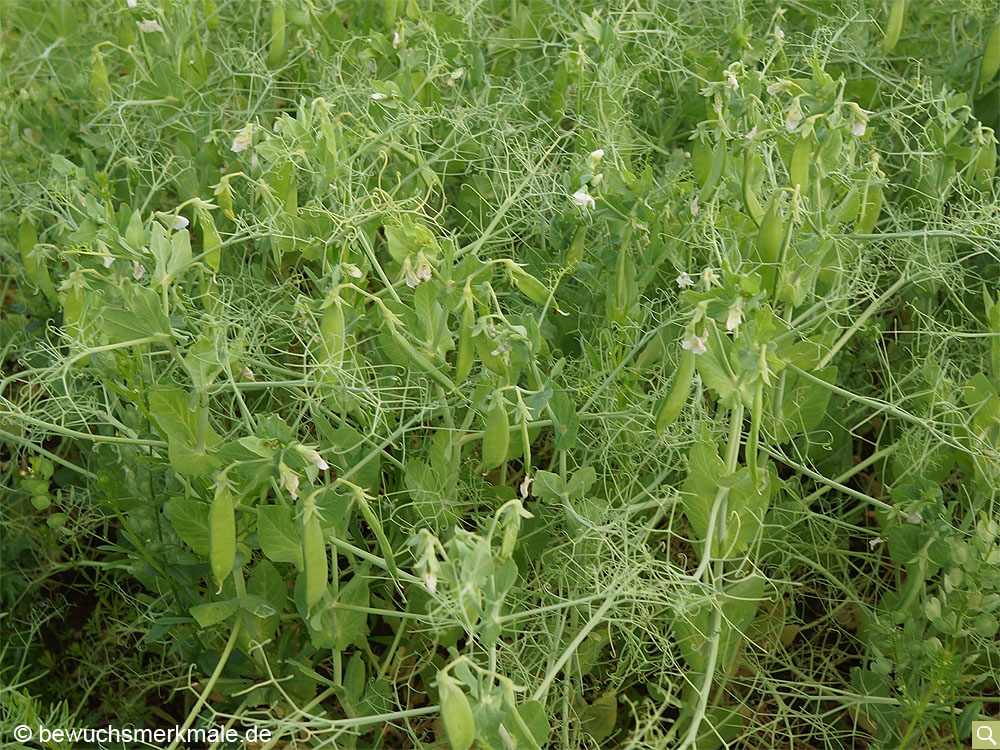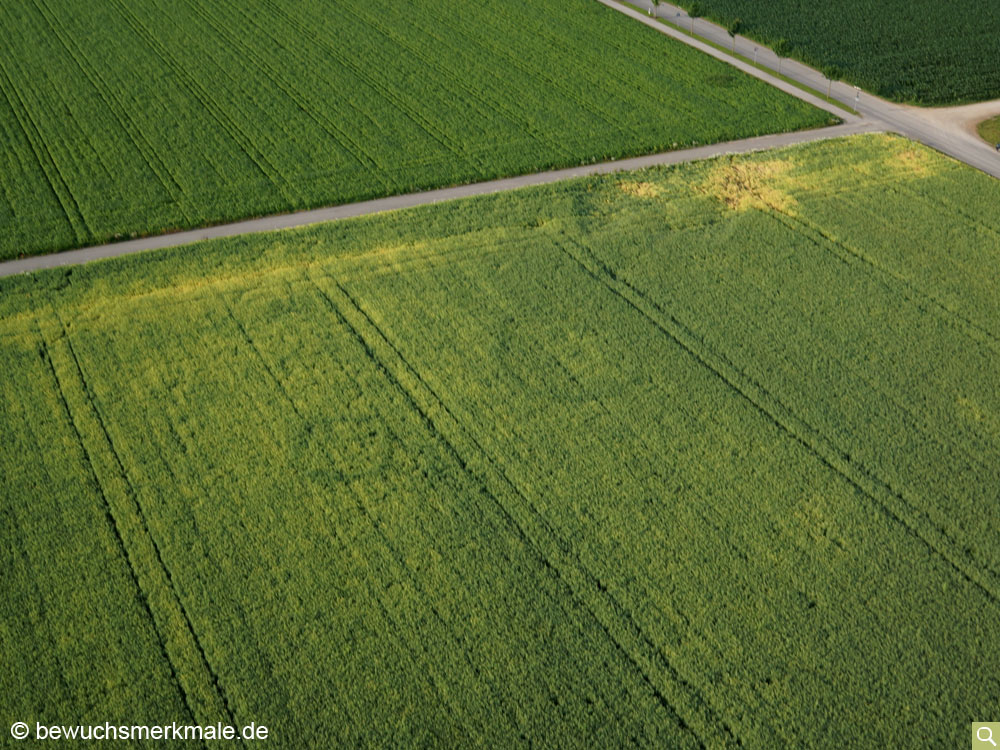Forage pea
Forage pea, also known by other names, is grown for green manure (enrichment of nitrogen in the soil) and as a protein-rich fodder crop.

Properties
Forage peas need loose soil and are sensitive to waterlogging. Especially at flowering time the plants need sufficient water.| Sowing: | from the middle of March until the end of April |
| Row spacing: | 15 - 30cm |
| Root depth: | medium taproot up to 50cm |
| Maturation: | yellowing from the end of June, harvest from mid-July to mid-August |
Formation of crop marks
Forage peas are not known to be a good medium for crop marks, but due to row spacing, larger structures can develop as positive fouling traits both in height growth and as colour differences at maturity.Examples

